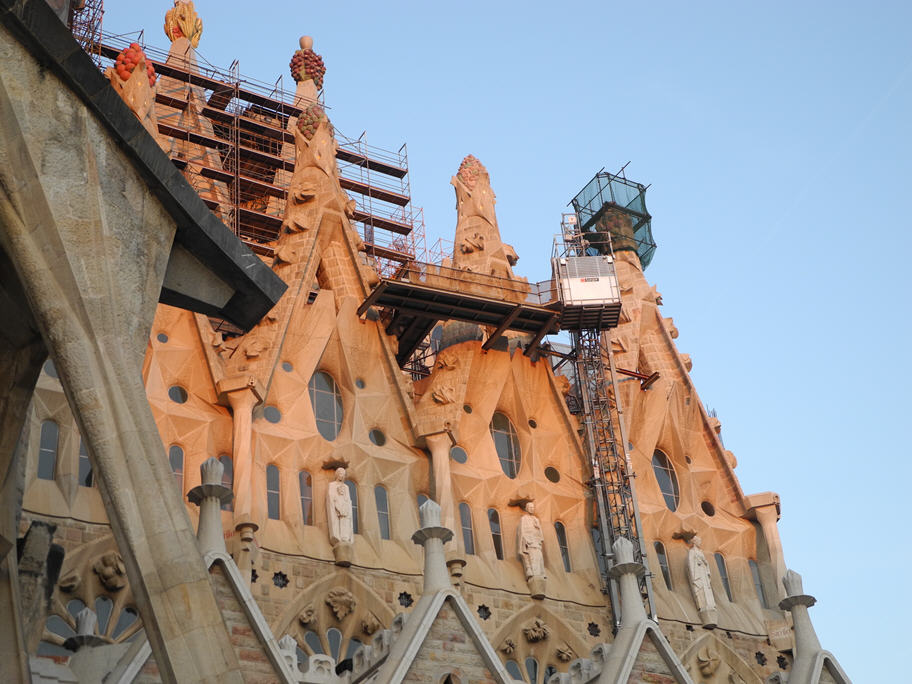By Larry Magid

I’ve been in Barcelona, Spain, for a few days where I delivered the keynote at the Mediterranean Association of International Schools.
No trip to Barcelona would be complete without a visit to Sagrada Familia, the whimsical yet sacred cathedral designed by famed architect Antoni Gaudí. The cathedral was only 25 percent finished when Gaudí died in 1926, and it’s still under construction. My wife and I also visited several other buildings and houses designed by the famed architect including a small cluster of houses in Park Güell, overlooking the city.
I know this sounds like a stretch, but as I toured Gaudí’s magnificent creations, I kept thinking about Steve Jobs.
Like Jobs, Gaudí was a stickler for detail. Rather than just focus on the grand design of his buildings, he fixated on small touches such as door knobs and staircase railings, just as Jobs concentrated on the smallest details of Apple products.
Also like Jobs, he shied away from boring right angles. Unlike many modern structures that resemble concrete boxes, Gaudí’s buildings feature rounded corners and interesting angles that make them visually exciting as well as functional. Apple products under Jobs have rounded corners to soften their appeal.
The iMac that Jobs brought to Apple shortly after he returned to the company in the late 1990s could have been designed by Gaudí.
Both Jobs and Gaudí understood thatform and function go together. Technology products, like buildings, can be beautiful and fully functional.
Of course, Jobs wasn’t the Apple’s main designer — that job belongs to Jonathan “Jony” Ive. However, Jobs was fully engaged in all aspects of Apple products, as well as its commercials, its stores, even its factories.
The world of technology moves a lot faster than the world of architecture, so while I don’t think Apple will be working on Jobs’ product ideas 85 years after his death, his vision will inspire products for years to come. A hundred years from now, when people are studying technology, design and business, they will no doubt point to the work of Steve Jobs. People won’t be using 2011 iPhones in 2111, but they will be influenced by them.
Gaudí and Jobs even shared a passion for designing buildings. Jobs hired world-class architects to design the flagship Apple store near New York’s Central Park and the Pixar studios in Emeryville, but he played a major role in the design and construction, right down to picking out the suppliers of steel beams used in Emeryville and the glass cubes used in New York. Jobs is listed as “lead inventor” on two patents having to do with glass staircases. When it came to the design of Apple’s signature stores, wrote biographer Walter Isaacson, “Jobs made all of the major decisions.”
Whether it was divine inspiration or just incredible taste and talent, Jobs and Gaudí, whose lifetimes didn’t overlap, left a legacy that will last for centuries.
Be the first to comment